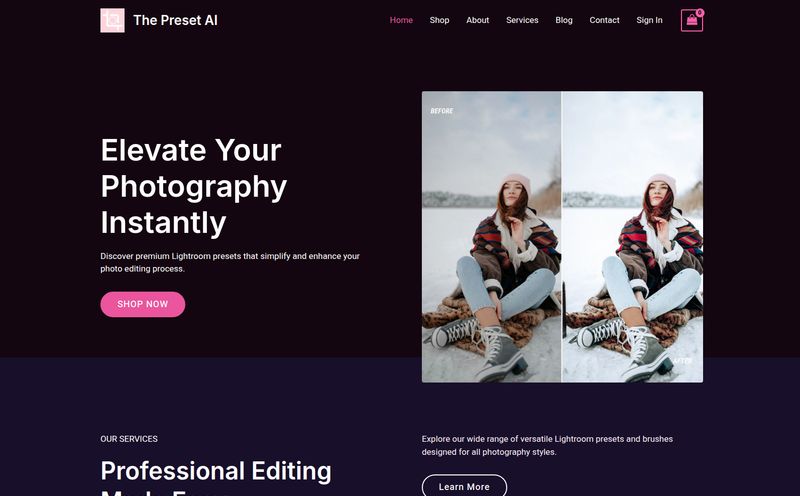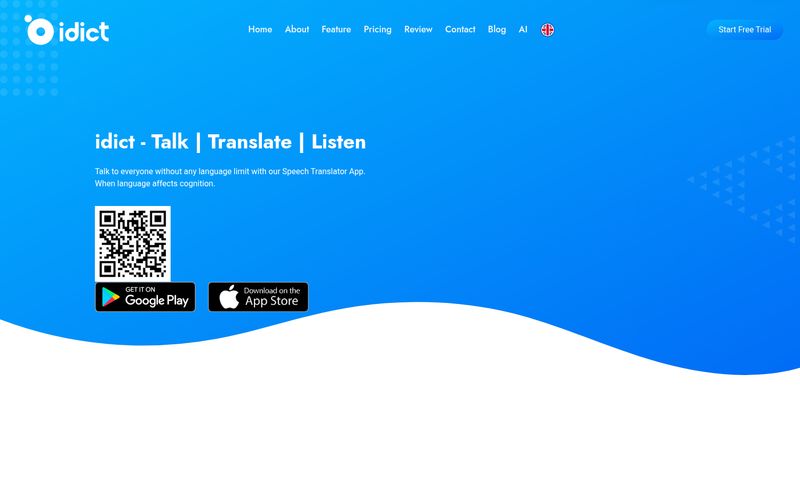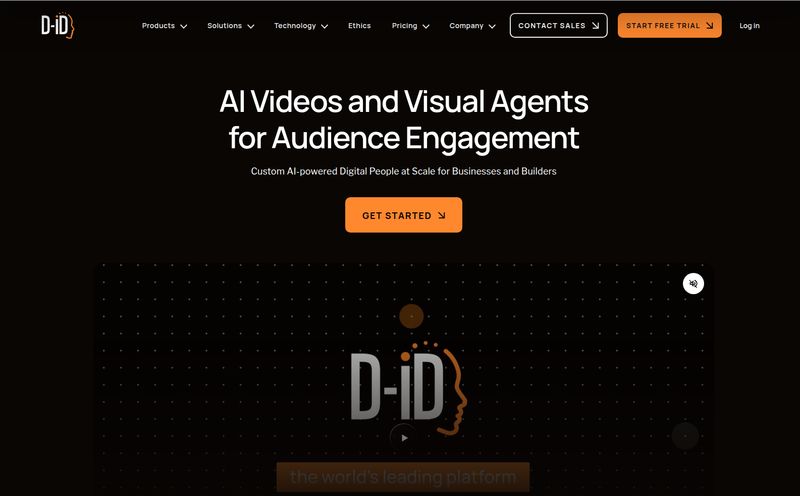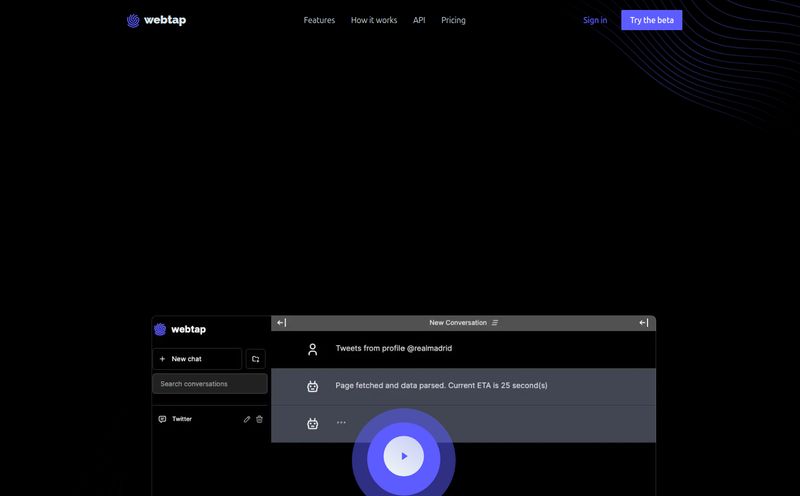The other day, I posted a quick snap on Instagram. Just me, holding a coffee cup, with a blurry city street behind me. Innocent, right? A classic 'hello from this random cafe' post. I thought nothing of it. A few likes, a comment from my aunt... teh usual. But what if that photo told a story I didn't mean to share? What if the reflection in my sunglasses showed the street sign? What if the logo on the cup identified the exact coffee shop, placing me on a map at a specific time?
We've all become visual storytellers, flooding the internet with moments from our lives. It feels personal and controlled. But our audience isn't just our friends and followers anymore. AI is watching. And it’s learning.
A little web experiment called They See Your Photos landed on my radar this week, and it’s one of those tools that’s both fascinating and deeply unsettling. It’s a sobering look at what our “innocent” photos are really telling the world. As someone who’s spent years neck-deep in traffic generation and online trends, this feels... different. It’s a shift in what “public information” means.
So, What Is 'They See Your Photos' Exactly?
Let's get one thing straight: this isn't some huge, venture-backed security software suite. It’s an experiment. A demonstration. It was built to make a point, and boy, does it ever.
The tool uses the Google Vision API, which is basically a direct line to Google's incredibly powerful image recognition AI. You feed it a photo, and it reports back everything it can identify. And I mean everything. It's not just looking for faces or cats. It’s reading text, identifying logos, pinpointing landmarks, and even guessing at the emotional state of the people in the picture. The whole point is to pull back the curtain and show you how much a machine can infer from a single, simple image.
I Threw a Photo In, and Here’s What Happened
Okay, so I didn't use my actual coffee photo. A guy in my line of work develops a healthy dose of paranoia over time. Instead, I grabbed a generic stock photo—one of those classic 'creative team in a meeting' shots. You know the type. A diverse group of people smiling, pointing at a whiteboard with some vague charts on it.

Visit They See Your Photos
The tool didn't just return 'people in an office.' That would have been boring. Instead, it broke it down with terrifying precision. It was like a CSI 'enhance' scene, but real.
Here’s a rough breakdown of what a simple upload can reveal:
| What a Human Casually Sees | What the AI Sees in Seconds |
|---|---|
| A few people in a meeting. | 4 adults (2 male, 2 female), likely aged between 25-40. |
| Someone's laptop on the table. | Apple MacBook Pro, 16-inch model (identified from port layout and logo). |
| Some messy notes on a whiteboard. | Readable Text: "Q3 Growth Strategy," "Increase CPC," "New Markets." |
| A happy, collaborative team. | Detected Emotions: Joy (Confidence: 98%), Collaboration (Confidence: 92%). |
Suddenly, that generic photo isn't so generic. It's a marketing team, probably at a well-funded tech startup, planning their third-quarter ad spend. A machine figured that out in less time than it takes to blink. Now, imagine it wasn't a stock photo. Imagine it was your team. Or your family at a picnic, with your car's license plate visible in the background.
The Good, The Bad, and The AI
The Brilliant Part: A Much-Needed Reality Check
I have to give credit where it's due. This is a brilliant piece of educational advocacy. For years, we've been waving our hands and telling people to 'be careful what you post online.' But that's abstract advice. It doesn’t really land. This tool isn't abstract. It shows you. It visualizes the invisible data you’re bleeding every single day. The user interface is dead simple, and the impact is immediate. It’s the digital equivalent of seeing how sausage is made—you might not like what you see, but you'll never look at a hot dog the same way again.
But Let's Be Real, It's Just a Demo
On the flip side, this tool is a one-trick pony. A very, very clever pony, but a pony nonetheless. Its purpose is to demonstrate a concept, not to be a fully-featured application. Its entire existence hinges on the Google Vision API, which means its accuracy is only as good as Google's current algorithm. I’ve seen these systems mistake a plastic bag for a jellyfish or confidently misread a sign. But let’s be honest, the scary part isn't how often it gets things wrong. It's how frighteningly often it gets them right.
Why Every Marketer and Blogger Should Pay Attention
This is where my SEO-brain starts firing on all cylinders. This technology changes things for anyone publishing content online.
First, think about User-Generated Content (UGC). That photo contest you’re running on social media? Those glowing customer photos you’re putting in a testimonial slider? You're not just publishing a nice picture; you could be publishing sensitive data without even realizing it. The responsibility for that data is a murky legal area that's getting less murky by the day, thanks to regulations like GDPR.
Second, this is Image SEO on steroids. We've all been dutifully writing our alt text for years. 'Image of a person running on a beach.' Well, Google no longer needs that. It knows it's a 'man in his 20s, wearing Nike running shoes and Oakley sunglasses, running on a beach in Malibu at sunset.' Our image optimization strategies need to evolve from simple descriptions to rich, contextual understanding. The game is changing from keywords to concepts.
"Privacy is not an option, and it shouldn't be the price we accept for just getting on the internet." - Gary Kovacs, former CEO of Mozilla
Finally, this hammers home that privacy is a trust signal. Having a clear, human-readable privacy policy that specifically addresses image and user data isn't just legal boilerplate anymore. It's a core part of Google's E-E-A-T framework (Experience, Expertise, Authoritativeness, and Trustworthiness). Being transparent about data is a way to build trust with both your users and search engines.
What's the Price of This Paranoia?
Zero. Zilch. Nada. The tool is completely free. The creators have released it as an educational project, a public service announcement for the digital age. The only cost is a little slice of your blissful ignorance about what happens to your photos once they're online. And if you ask me, that's a bargain.
This Is Bigger Than Just One Website
They See Your Photos is just the friendly, approachable tip of a massive iceberg. The same core technology is the engine behind Amazon's Rekognition, Microsoft's Azure Computer Vision, and countless other platforms. It's already being used in retail stores to analyze shopper behavior, in social media to auto-tag your friends, and in security systems for surveillance.
It's like we've all been given a new superpower—the ability to extract deep, complex meaning from simple pixels—but nobody handed us the instruction manual or the code of ethics. We're all just toddlers in the driver's seat of a sports car. What could possibly go wrong?
Don't Stop Sharing, Start Thinking
Look, the point of this isn't to scare you into deleting all your social media and becoming a digital hermit living in a cabin in the woods (though some days that sounds nice). The AI cat is out of the bag, and it’s not going back in.
The goal is digital literacy. Our job now is to become smarter, more conscious digital citizens. To pause for that extra second before we hit 'Share' and ask ourselves, 'What story am I really telling here? And who am I telling it to?'
Go on. Find a photo you thought was 'safe' and give the tool a try. The internet might never look quite the same to you again.
Frequently Asked Questions
What is They See Your Photos?
It's a free online experiment that uses Google's Vision AI to analyze any photo you upload. It then shows you all the information the AI can extract, from objects and text to brands and even emotions, to highlight modern digital privacy risks.
Is it safe to upload my photos to this tool?
The tool's purpose is demonstration. As a general rule, you should always be cautious about uploading personal, sensitive images to any third-party website. For testing this tool, I’d suggest using a non-personal photo, like a picture of an object or a landscape, to see its capabilities without risking your own privacy.
How does the AI photo analysis work?
It works by sending your photo to the Google Vision API. This powerful AI has been trained on billions of images. It uses machine learning models to recognize patterns, objects, characters, and other features within the photo and returns a structured list of what it finds.
Is this kind of AI technology legal?
Yes, the technology itself is perfectly legal. The crucial part is how it's used. Data privacy laws like the GDPR in Europe and the CCPA in California exist to regulate how companies can collect, store, and use the personal data that this technology can extract, especially without user consent.
What can I do to protect my privacy in photos?
A few good habits can help. Be aware of what's in your background—avoid showing house numbers, street signs, or sensitive documents. Consider using software to strip EXIF data from your photos before uploading, which can contain GPS coordinates. And most importantly, just think critically before you post.
Is the tool's analysis always 100% accurate?
No, and that's an important point. AI is not infallible. It can misidentify objects, misread text, or make wrong assumptions. However, its accuracy is improving at an astonishing rate, and it's already correct more often than it is wrong.
Reference and Sources
- Google Cloud Vision API - The technology powering the experiment.
- Electronic Frontier Foundation (EFF) - An excellent resource for digital privacy issues.
- The tool itself, "They See Your Photos," can be found with a quick search, but for privacy reasons of my own, I prefer not to link directly to experimental third-party tools. Be smart when you search!



